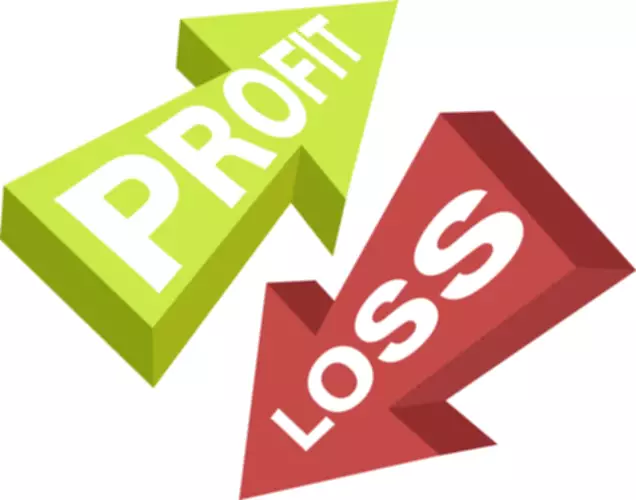Content

For example, it your small business sells $1,000 in products in the current quarter and you expect your customer to pay in the following quarter, you would record $1,000 in revenue in the current quarter. According to Investopedia, revenue is the money a business earns through its business operations, such as selling its products and services to customers. Operating revenue is that which a company earns through its regular line of business, while non-operating revenue is earned through other sources, such as interest income from investments. A gain is income that typically results from one-time transactions, such as selling equipment for more than its accounting value or winning a lawsuit.
What are the types of income accounts?
- Sales.
- Rent revenue.
- Dividend revenue.
- Interest revenue.
- Contra revenue (sales return and sales discount)
The income statement presents information on the financial results of a company’s business activities over a period of time. The income statement communicates how much revenue the company generated during a period and what costs it incurred in connection with generating that revenue. The basic equation underlying the income statement, ignoring gains and losses, is Revenue minus Expenses equals Net income. This reading has presented the elements of income statement analysis. A company’s net income and its components (e.g., gross margin, operating earnings, and pretax earnings) are critical inputs into both the equity and credit analysis processes. Equity analysts are interested in earnings because equity markets often reward relatively high- or low-earnings growth companies with above-average or below-average valuations, respectively.
Cash flow from operations
Operating income is calculated by subtracting operating expenses from the gross profit. An income statement, which shows your revenue after expenses and losses, tells a story about the performance of your business over a certain time period, such as monthly, quarterly or annually. Once referred to as a profit-and-loss statement, an income statement typically includes revenue or sales, cost of goods sold, expenses, gross profits, taxes, net earnings and earnings before taxes.
- The balance sheet and income statement complement each other in providing a complete picture of a company’s financial position and future prospects.
- Download our FREE whitepaper on financial statements to dive into P&L statements, balance sheets, and cash flow statements.
- David Kindness is a Certified Public Accountant and an expert in the fields of financial accounting, corporate and individual tax planning and preparation, and investing and retirement planning.
- The above example is one of the simplest types of income statements, where you apply the values of income, expense, gains and loss into the equation to arrive at the net income.
- If you don’t have a background in accounting or finance, these terms may seem daunting at first, but reading and analyzing financial statements remains a requisite skill for business owners and executives.
- Read alone, the income statement doesn’t give the full picture of a business’s health.
The purpose of income statements is to show the profitability of your business. Use the P&L to see whether you have a net income (yay!) or loss for the time period on the last line of your income statement. An income statement is a report of your business’s profits and losses over a specific period. You can use the income statement to summarize monthly, quarterly, or annual operations. A quarterly income statement shows the profits or losses generated by your business over a three month period. It can also be referred to as a profit or loss account, and is a crucial financial statement that shows the businesses income and expenditures, detailing your net income or net profits. It’s frequently used in absolute comparisons, but can be used as percentages, too.
What Is the Difference Between Operating Revenue and Non-Operating Revenue?
Take a restaurant that incurs an operating expense related to food and labor. Those expenses are listed on the income statement and can give you an idea of whether your pricing is spot-on or it’s time to raise or lower prices. In this example of income statement, the business has a net loss for this time period. The business owner can use this information to cut back on expenses and work toward increasing product sales.

To understand the above formula with some real numbers, let’s assume that a fictitious sports merchandise business, which additionally provides training, is reporting its income statement for a recent hypothetical quarter. These are all expenses linked to noncore business activities, like interest paid on loan money. An organization located in a unique industry may find that it requires additional accounts beyond the ones noted here. Thus, the exact set of income statement accounts used will vary by company. As usual, we recommend running a Trial Balance before generating an income statement; especially for larger businesses with many transactions, or if needed in preparation for tax time.
Company B Income Statement
Since this forms the last line of the income statement, it is informally called “bottom line.” It is important to investors as it represents the profit for the year attributable to the shareholders. It shows the company’s revenues and expenses during a particular period, which can be selected according to the company’s needs. An income statement indicates how the revenues are transformed into the net income or net profit. Subtract the selling and administrative expenses total from the gross margin. A single-step income statement, on the other hand, is a little more straightforward.

It is common for companies to split out interest expense and interest income as a separate line item in the income statement. This is done in order to reconcile the difference between EBIT and EBT. Financial statements are written records that convey the business activities and the financial performance of a company. The first section, titled Revenue, indicates that Microsoft’s gross profit, or gross margin, for income statement accounts the fiscal year ending June 30, 2021, was $115.86 billion. It was arrived at by deducting the cost of revenue ($52.23 billion) from the total revenue ($168.09 billion) realized by the technology giant during this fiscal year. Just over 30% of Microsoft’s total sales went toward costs for revenue generation, while a similar figure for Walmart in its fiscal year 2021 was about 75% ($429 billion/$572.75 billion).
Harold Averkamp has worked as a university accounting instructor, accountant, and consultant for more than 25 years. Earnings per share are computed by dividing the net income figure by the number of weighted average shares outstanding. With 7.55 billion outstanding shares for Microsoft, its 2021 EPS came to $8.12 per share ($61.27 billion ÷ 7.55 billion). James Chen, CMT is an expert trader, investment adviser, and global market strategist. He has authored books on technical analysis and foreign exchange trading published by John Wiley and Sons and served as a guest expert on CNBC, BloombergTV, Forbes, and Reuters among other financial media. Contains property taxes, use taxes, and other taxes charged by local governments. Contains the cost of lease payments on facilities and land being leased by the entity.
- Similarly, operating revenue is revenue generated from primary business activities while non-operating revenue is revenue not relating to core business activities.
- Projects Create tasks, assign to teammates, discuss with customers, track the time.
- This net income calculation can be transferred to Paul’sstatement of owner’s equityfor preparation.
- This will give you a future understanding of income statement definition that will be of great benefit to you and your business practice.
- Gross Profit is considered the preliminary or “first line” measure of profit before other expenses are taken into account.
When you have a net loss, work on cutting back expenses and increasing sales. The parts of the income statement before taxes and interest show your company’s EBIT, or earnings before interest and taxes. Revenue – Cash inflows or other enhancements of assets of an entity during a period from https://www.bookstime.com/ delivering or producing goods, rendering services, or other activities that constitute the entity’s ongoing major operations. It is usually presented as sales minus sales discounts, returns, and allowances. Every time a business sells a product or performs a service, it obtains revenue.


